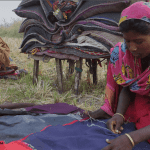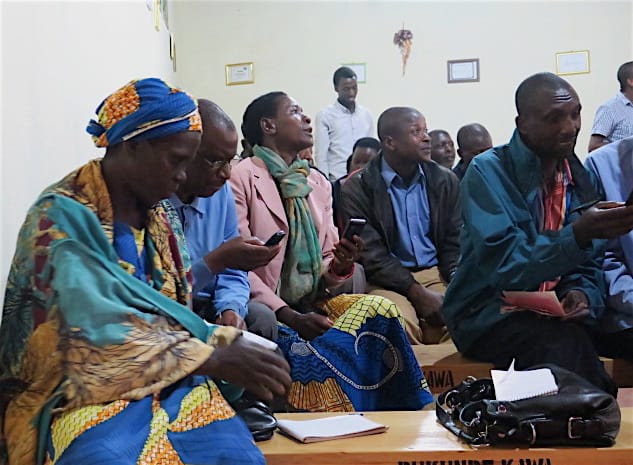Women Feeding Africa: Innovative Business Solutions to Close the Gender Gap in Agricultural Productivity
Women make essential contribution to the development of agriculture and rural economies in emerging countries. On average, women make up 43% of the agricultural labor force in developing countries, ranging from 20% in Latin America to 50% in Eastern Asia and sub-Saharan Africa (SSA). Further, in SSA women contribute 60-80% of the region’s food. Yet despite their importance to the sector, women continue to face specific constraints that limit their productivity. They have lower access to agricultural inputs and farming knowledge, earn lower returns on the inputs used, and face gender-based distortions in the product markets. Similarly, women are also disadvantaged by other gendered norms and practices, which result in fairly rigid and unequal divisions of labor both at the household level and the marketplace. Women’s participation in the sector is thus limited to value chain nodes and crops with lower economic return than men. The resulting gender gaps in agricultural productivity can be substantial, ranging from 13% in Uganda and 16% in Tanzania, to 28% in Malawi.
So what would happen if we closed the gender gap in the sector and women accessed the same productivity resources as men? Research shows that yields could increase by 20-30%. In Rwanda for instance, closing the agricultural gender gap would lead to about a 19% increase in crop production, which would add $419 million to the country’s GDP. Closing the gap could bring 180 million Africans out of hunger, and lift millions of families and communities out of poverty. As such, innovative solutions to the constraints facing women need to be explored. Below, we discuss a number of initiatives that are developing ground-breaking solutions to support the region’s female farmers.
ENHANCING ACCESS TO CREDIT FOR WOMEN IN AGRICULTURE
Women’s access to inputs – fertilizers, pesticides, hybrid seed, wage labour and machinery – is highly influenced by access to credit. But on a general level, the agricultural sector is considered high-risk for most traditional lenders; lending to the sector is thus highly collateralized and follows stringent underwriting processes. Despite the importance of the sector, lending has remained relatively low at only 2.4%, 3.6% and 3.7% of total loan portfolios in Cote d’Ivoire, Ghana and Nigeria, respectively. And this number is significantly less for women, due to their limited ownership of assets and land used as collateral, and to the lack of banking and credit data about female borrowers (only 27% of women in sub-Saharan Africa were estimated to have a financial institution account in 2017). In addition, financial decision-making powers in some countries continue to lie with men as a result of gender-biased and retrogressive regulations and women’s low literacy levels.
Nevertheless, women do undertake various transactions, creating data points that can be leveraged to generate credit scores. To that end, a number of players are already working to digitize women’s transactions. The Aga Khan Foundation, for example, has been working to digitize the operations of women savings groups in Tanzania. TruTrade purchases produce from women farmers in Kenya and Uganda and pays them directly through their mobile phones, which not only helps build a digital profile but also gives them security and control over their finances.
Some companies are even developing financial products customized for women. For example, Cherehani Africa is targeting rural women in Kenya through their “Kilimo (Swahili for agriculture) loans,” which provide subsidized credit to finance high-yield seeds, pesticides, green house kits, high-breed dairy cattle, fisheries and poultry. The company also connects farmers to input suppliers through their online platform.
OPTIMIZING WOMEN FARMERS’ AGRICULTURAL PRODUCTION
Across the agricultural value chain, production is one of the most female-driven stages. However, women not only face the challenge of unequal access to a variety of productive inputs – fertilizer, seed, contemporary farm implements and paid labour – but also achieve unequal returns on those inputs, which limits their output. To help address this, Agrinfo, a female-led aerial drone surveillance enterprise in Tanzania, is working with women in the country to identify their crop cultivation needs and provide solutions that will reduce pest infestation and diseases.
FACILITATING GENDER-RESPONSIVE EXTENSION SERVICES
Knowledge and training in farming techniques is also key to enhancing the productivity of the inputs used – and ultimately boosting the efficiency of the broader sector. Yet women farmers receive less than 10% of agriculture extension services, limiting their ability to apply good agronomic practices – and low literacy levels are considered a major barrier to their use of these services. There are several innovative approaches that aim to address this, however. For instance, Digital Green uses a video-based approach to deliver extension services to women in India and Ethiopia; and the Talking Book audio device (established through a partnership between Amplio, the Mennonite Economic Development Associates and Literacy Bridge Ghana) is enhancing the delivery of practical and easy-to-learn extension services in Ghana.
INCREASING POST-HARVEST VALUE FOR WOMEN FARMERS
Sub-Saharan Africa loses about 30-50% of its total agricultural produce post-harvest, due to poor storage and transportation techniques. In many parts of the continent, women play a significant role in post-harvest activities such as drying, storing, cleaning and processing food. However, efforts to reduce post-harvest losses have tended to focus on technological solutions that women may not have the opportunity or resources to utilize. In response, Claphijo Enterprises in Tanzania is helping women make use of surplus or unsold mangoes by providing cheap communal drying and dehydration facilities. In addition, some of this dried produce is bought from the women and sold under the company’s brand, “Mama’s Flavors.”
CREATING MARKET AND VALUE CHAIN LINKAGES
Agricultural commodity trading has traditionally been male-dominated, with factors such as limited freedom of movement, and low access to infrastructure and information networks preventing women from participating in the marketing of produce, both locally and internationally. Women thus often rely on either their husbands or middlemen, who collect produce from their farms. Further, social norms require women to meet household food needs first before selling the surplus. And women also typically receive lower returns on their produce, because of gender biases in the product markets. All of these factors make it difficult for women to professionalize their farming work. To address these challenges, TruTrade provides information on prices and markets to women farmers in Kenya and Uganda, and directly links them to the buyers. GROOTS Kenya is also providing capacity building for women in Kenya, to help them exploit various market opportunities.
Though the solutions discussed above are exciting, for any sector to thrive, this sort of strengthening should be done at an ecosystem level – including both women farmers and development organizations. That’s the focus of organizations like African Women in Agricultural Research and Development (AWARD), whose Gender in Agribusiness Investments programme incubates innovations and enterprises built with the intention of helping to bridge the gender gap in African agriculture. It’s encouraging to see the emergence of these – and other – innovative organizations focused on supporting women farmers in sub-Saharan Africa. Their work promises to have a major impact on the continent.
Agnes Makena is a business consulting and research associate and Racheal Wangari is a business consulting and research manager at Intellecap.
Photo courtesy of Ryan Brown / UN Women.
- Categories
- Agriculture



